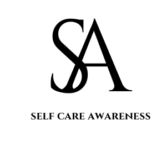
How do you recognize the signs of emotional burnout, and what steps do you take to address it?
- Understanding Emotional Burnout
- Signs and Symptoms of Emotional Burnout
- Recognizing Personal Burnout Triggers
- Strategies for Addressing Emotional Burnout
- Lifestyle Adjustments for Burnout Recovery
- Professional Help and Resources
Introduction
Emotional burnout is physical, emotional, and mental weariness from continuous stress or excessive tasks. Early burnout detection is essential for preventing further decline and increasing well-being. This article discusses emotional burnout symptoms, health effects, and recovery methods.
1. Understanding Emotional Burnout
• Definition: Emotive burnout is characterized by excessive exhaustion, disconnection, and feeling overwhelmed by everyday tasks.
• Causes: Identify core factors, including excessive job expectations, absence of work-life balance, caring, or chronic stress.
2. Signs and Symptoms of Emotional Burnout
• Physical Signs: Chronic exhaustion, headaches, sleeplessness, and recurrent illnesses may indicate a compromised immune response.
• Emotional Signs: Observe detachment, cynicism, impatience, and feelings of inefficacy or limited achievement.
• Behavioral Signs: Remark changes in behavior, such as social disengagement, ignoring obligations, or increasing substance use.
3. Recognizing Personal Burnout Triggers
• Self-Assessment: Encourage individuals to evaluate stress levels and identify burnout triggers.
• Identifying Warning Signs: Identity behavior and emotional responses that may suggest burnout.
4. Strategies for Addressing Emotional Burnout
• Self-Care: Encourage relaxation and stress alleviation through mindfulness meditation, yoga, or hobbies.
• Set Boundaries: Discuss setting realistic limitations on work hours, obligations, and personal time to avoid overload.
• Encourage seeking help from friends, family, or professional counselors for emotional advice.
5. Lifestyle Adjustments for Burnout Recovery
Work-Life Balance
Balancing personal obligations like family, leisure, and social commitments with professional ones like work and career goals. It requires time and energy management to satisfy both without sacrificing either.
Total wellness depends on maintaining a healthy work-life balance. It allows individuals to prioritize personal relationships, pursue hobbies, and prevent burnout, and increase productivity and job satisfaction.
Set limits, manage time, delegate duties, and practice self-care to improve work-life balance. A balanced lifestyle where personal and professional activities complement each other promotes long-term enjoyment and success.
Healthy Habits
Emphasize the value of food, exercise, and sleep to build emotional resilience and recover from burnout.
6. Professional Help and Resources
Therapy, counseling
• Counseling & Therapy
Remedy and counseling assist people in improving their mental, emotional, and behavioral health. A breakdown of each:
• Therapy
• Definition: Psychotherapy, often known as psychotherapy or counseling, is a systematic procedure where licensed professionals utilize various strategies to help individuals understand their ideas, feelings, and actions.
The main purpose of therapy is to help individuals cope with obstacles, manage mental health issues, including depression and anxiety, and create good life changes via support, advice, and techniques.
• Types: There are several varieties of therapy, including CBT, psychodynamic, interpersonal, and specialized treatments for specific needs or problems.
• Counseling
• Compassion is a treatment that offers direction, support, and practical answers to persons confronting personal or psychological issues.
• Purpose: Solace tackles interpersonal challenges, grief, loss, stress management, professional transitions, and personal growth.
• Approaches: Mentors utilize active listening, problem-solving, and behavioral interventions to help clients achieve objectives and enhance mental and emotional well-being.
•Therapy and comforting include a client-therapist partnership to understand and resolve emotional issues, improve coping skills, and grow personally. Anyone enduring emotional difficulty, life transitions, or mental health issues might benefit from therapy or counseling.
Emergency Assistance Programs
Inform readers about workplace stress and burnout assistance resources.
Conclusion
In conclusion, emotional burnout is a significant disorder that impacts numerous elements of life and health. Early detection and proactive rehabilitation measures can promote well-being and emotional resilience. To avoid emotional fatigue, prioritize self-care, set limits, and seek help.
